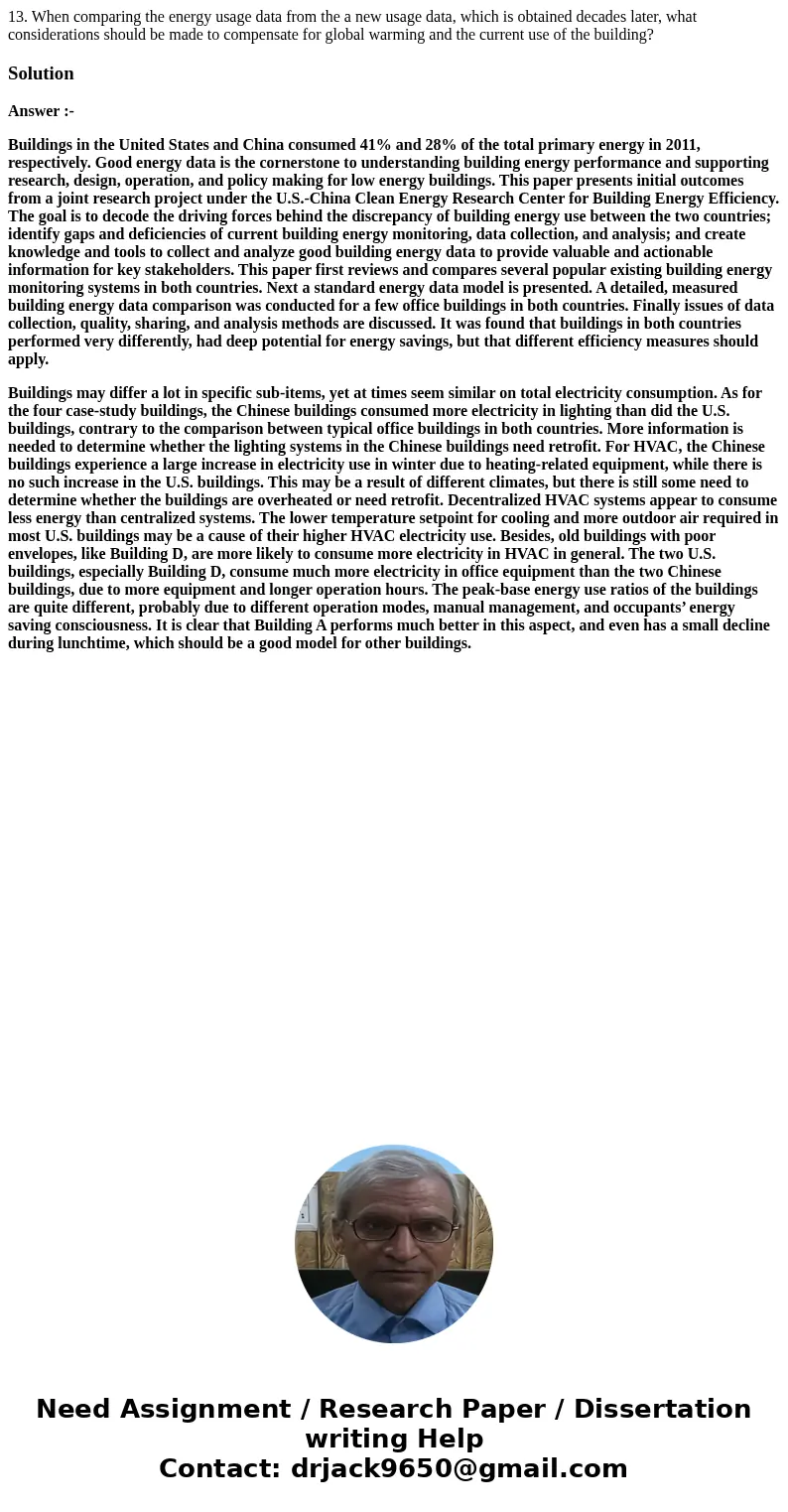13 When comparing the energy usage data from the a new usage
Solution
Answer :-
Buildings in the United States and China consumed 41% and 28% of the total primary energy in 2011, respectively. Good energy data is the cornerstone to understanding building energy performance and supporting research, design, operation, and policy making for low energy buildings. This paper presents initial outcomes from a joint research project under the U.S.-China Clean Energy Research Center for Building Energy Efficiency. The goal is to decode the driving forces behind the discrepancy of building energy use between the two countries; identify gaps and deficiencies of current building energy monitoring, data collection, and analysis; and create knowledge and tools to collect and analyze good building energy data to provide valuable and actionable information for key stakeholders. This paper first reviews and compares several popular existing building energy monitoring systems in both countries. Next a standard energy data model is presented. A detailed, measured building energy data comparison was conducted for a few office buildings in both countries. Finally issues of data collection, quality, sharing, and analysis methods are discussed. It was found that buildings in both countries performed very differently, had deep potential for energy savings, but that different efficiency measures should apply.
Buildings may differ a lot in specific sub-items, yet at times seem similar on total electricity consumption. As for the four case-study buildings, the Chinese buildings consumed more electricity in lighting than did the U.S. buildings, contrary to the comparison between typical office buildings in both countries. More information is needed to determine whether the lighting systems in the Chinese buildings need retrofit. For HVAC, the Chinese buildings experience a large increase in electricity use in winter due to heating-related equipment, while there is no such increase in the U.S. buildings. This may be a result of different climates, but there is still some need to determine whether the buildings are overheated or need retrofit. Decentralized HVAC systems appear to consume less energy than centralized systems. The lower temperature setpoint for cooling and more outdoor air required in most U.S. buildings may be a cause of their higher HVAC electricity use. Besides, old buildings with poor envelopes, like Building D, are more likely to consume more electricity in HVAC in general. The two U.S. buildings, especially Building D, consume much more electricity in office equipment than the two Chinese buildings, due to more equipment and longer operation hours. The peak-base energy use ratios of the buildings are quite different, probably due to different operation modes, manual management, and occupants’ energy saving consciousness. It is clear that Building A performs much better in this aspect, and even has a small decline during lunchtime, which should be a good model for other buildings.

 Homework Sourse
Homework Sourse